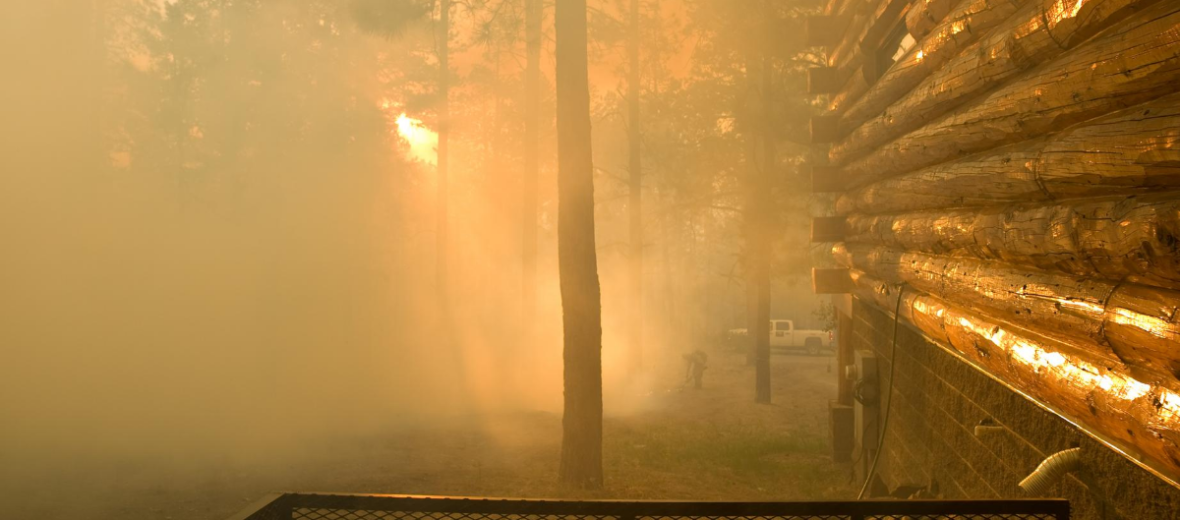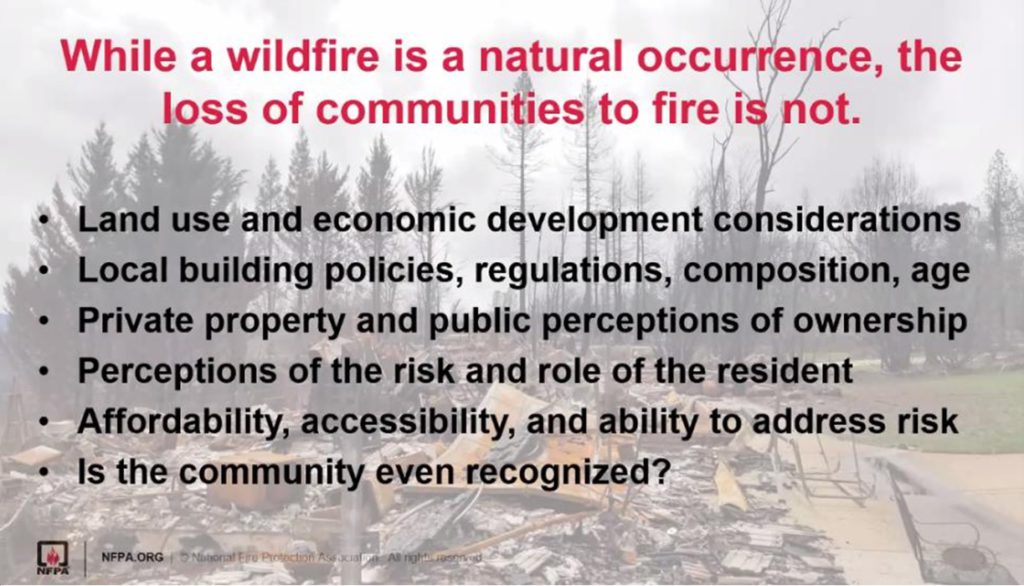
PyroLife International Symposium: Towards an Integrated Fire Management
Highlights from the seventh PyroLife Symposium webinar on July 15, 2020 by Isabeau Ottolini.
“Wildfires are natural occurrences, but the loss of communities to fire is not”. With this phrase, Lucian Deaton, Program Manager at the National Fire Protection Association, NFPA, started the webinar on July 15th. So, how to stop life and property loss to wildfires, and prevent disasters from happening?
Many ecosystems depend on wildfires for their survival. But a wildfire can become disastrous for communities when it reaches the wildland-urban interface, and the embers ignite urban structures. If this happens, a wildfire can turn into urban conflagrations and overwhelm the fire services (as these have to deal simultaneously with wildland and urban fires). This then reduces the capacity to protect lives and properties, putting communities at risk.
To prevent future disasters from happening (like Camp Fire in California, 2018), we need to consider the social dimensions of wildfires (see image below). These play a decisive role in the community’s vulnerability – or resilience – towards wildfires.

The Firewise USA® Program aims at the prevention of wildfire-related disasters by stopping structural fires from happening. As the image below illustrates, if you can stop the disaster chain at the level of urban fires, you can then avoid fire services from becoming overwhelmed, fire protection from being reduced, and – most importantly – disaster from happening.

That is the theory. But to prevent homes from igniting, you need the engagement and commitment of homeowners to make their homes safe(r) from wildfires. Here things become more complicated, as Lucian illustrates with this quote: “this isn’t rocket science. It’s far more difficult. It’s social science” (Dr. Jack Cochen, USFS Missoula Fire Lab).
So, how can we foster true social behavioural change and break the disaster cycle?
The experiences from the Firewise USA® Program show that key aspects are to empower communities by giving them the tools to be the change and create collaborative networks amongst all stakeholders.
The empowerment of communities starts, first of all, with creating an informed public. This is done by raising awareness on people’s personal fire risk – a necessary first step as they might be unaware of their fire risk and the actions they can undertake to reduce it. Then, practical tools and tips are shared with the community on keeping their homes safe from wildfires – like cleaning the house’s gutter and making space between vegetation.
To build an engaged public, conversations and peer-to-peer exchanges are essential. Here, neighbours can talk about their shared risk, exchange their knowledge, and motivate each other to act. Potential worries and doubts are also addressed through demonstrations, which furthermore help to bring people together, show what the actions described on paper mean in practice, and show that it is both feasible and does not require moonscaping.
Of course, fire safety is not only a matter of communities keeping their homes from igniting. Equally important is the involvement of, and collaboration between, all stakeholders, such as fire departments, policymakers, and local authorities. Herein the Fire & Life Safety Ecosystem framework helps at identifying where collaborative efforts between stakeholders are successful or need further improvement.
Finally, to make true social behavioural change possible through resident-led initiatives, Lucian shares these necessary reflections:
- What is the focus of the initiative? This can start from public education (introducing communities to the topic of fire risk) and then build up to community-owned actions.
- Will the change go away when the money goes away? It is necessary to find ways to continue the community’s fire-resilient behaviours, even after the funding stops.
- Is this a demonstration project with a closing date? The aim is to make the efforts part of the local understanding, even after the project closes.
- Are local elected officials and/or community leaders involved? This is key in legitimising the message and moving the efforts forward.
- And lastly: Who owns the achievement? Real social change comes when the community itself has ownership over the achievements.




Pingback: Webinar Pyrolife: ‘Crear un público informado y comprometido para proteger las estructuras de los incendios forestales’ por Lucian Deaton | CareNet
Pingback: Webinar Pyrolife (1): “Crear un públic informat i compromès per a protegir les estructures dels incendis forestals” per Lucian Deaton | CareNet